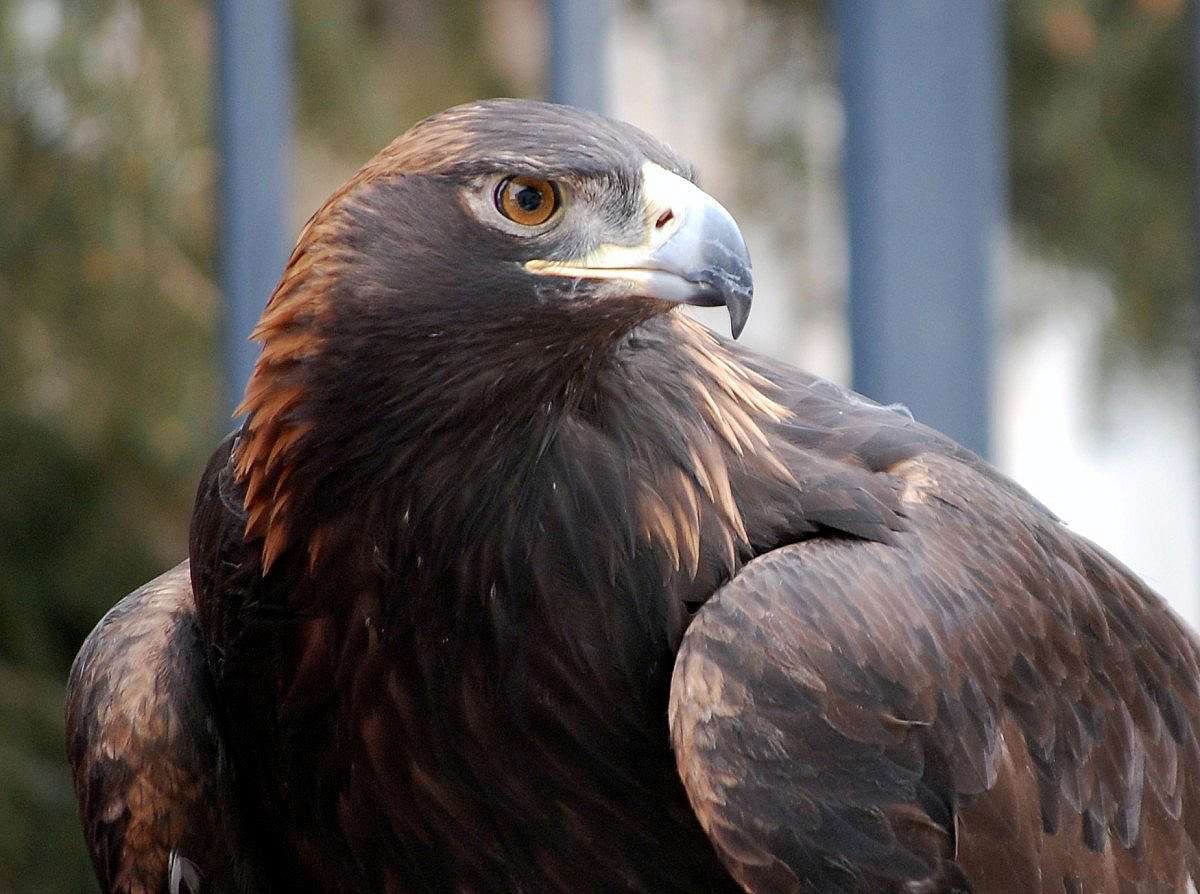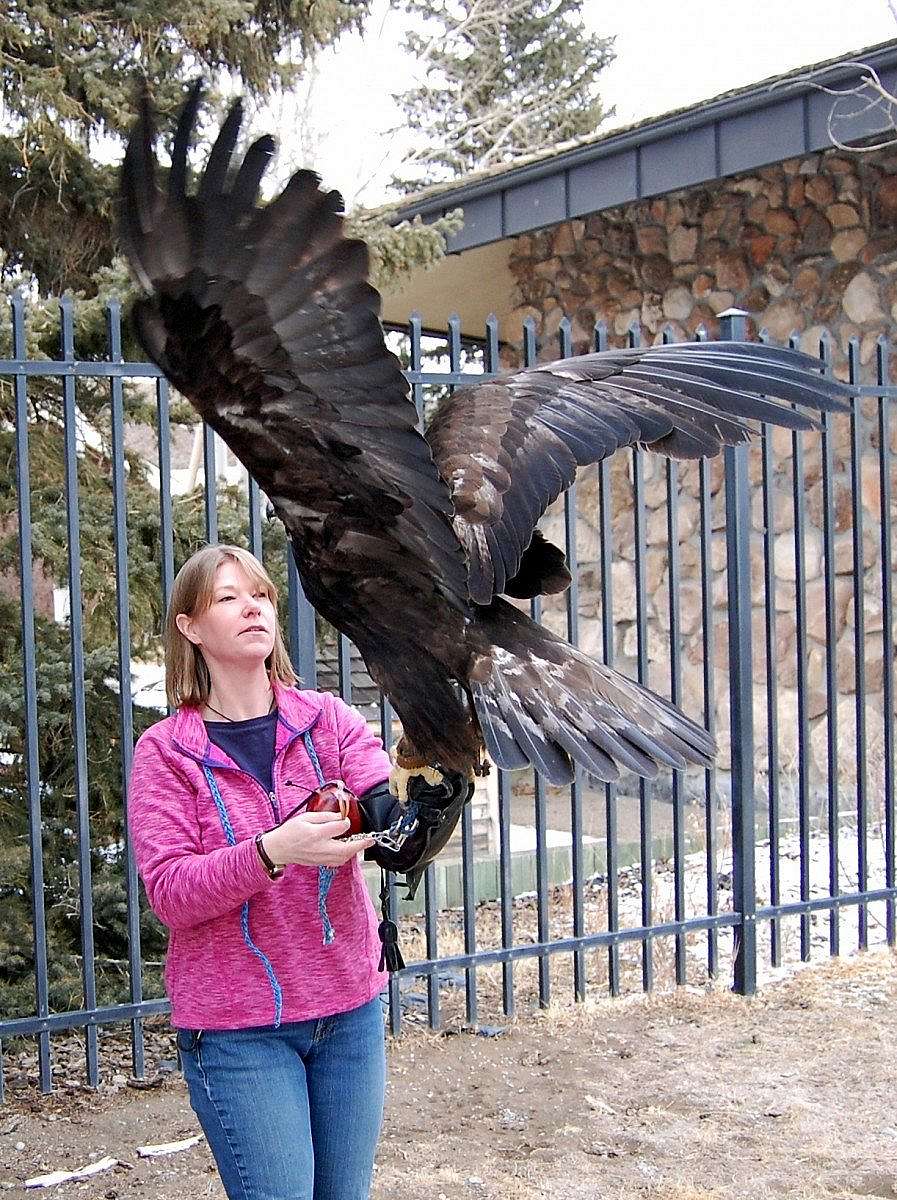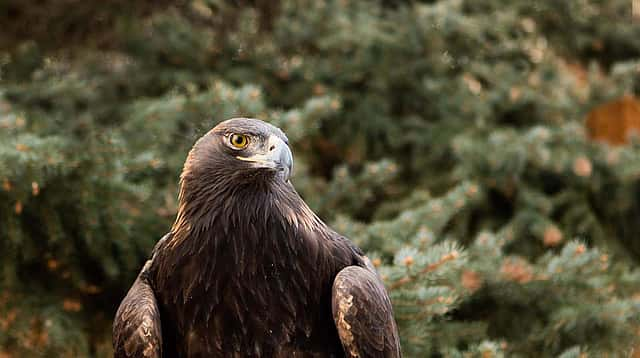
Mixed Emotions and Beautiful Kateri
By Anne the Volunteer
When the Draper Museum Raptor Experience began, Melissa was able to find four wonderful birds that fit our program well. She continued, however, to look for a fifth bird to add to our collection. We wanted a golden eagle, and had even built our mews with a room specifically designed to house one. A golden eagle, however, is difficult to obtain, and even if a non-releasable golden eagle becomes available, one must prove that the program is worthy of having the bird, and the trainer, in this case Melissa Hill, is qualified to train a golden eagle. If you have been following our Raptor Experience on Facebook, or reading our blogs, you know that our dream recently came true, and our beautiful golden eagle, Kateri, now resides in our mews.
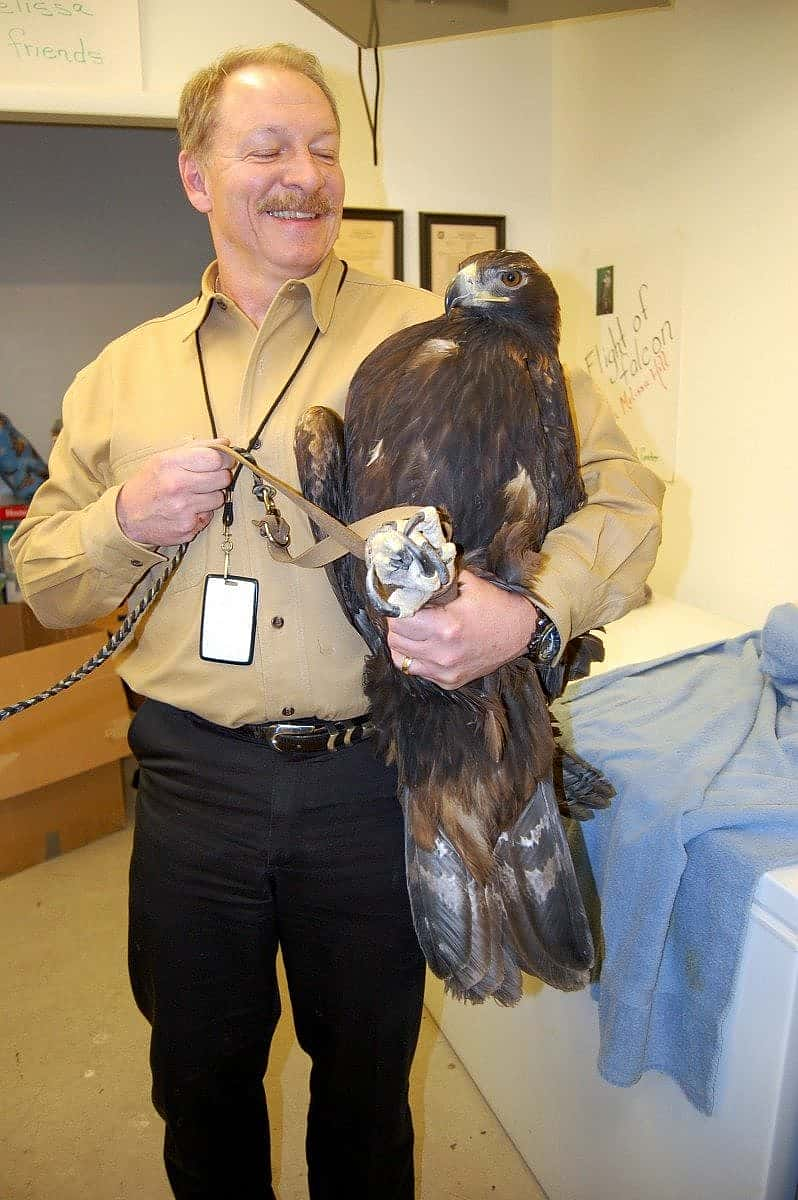
I was not present when she arrived, and Dr. Preston lifted her from her travel box, therefore I eagerly awaited my first peek at our new girl. Now I am not an overly emotional person, in that I don’t cry at the end of sad movies or books, even though I may think about them for days afterwards. For this reason, I was surprised at my reaction upon first seeing her. Kateri was in her mew, which had been darkened so that she would have time to adjust to her new home without a lot of extra stimuli. Opening the door, Melissa gave me my first view of our new golden eagle. She is so beautiful! I was in complete awe of her, and to my surprise I became very choked up, feeling almost like I would cry. Seeing her just overwhelmed me.
So why was my reaction not what I would have expected? I thought about this later after arriving home. I knew I would be awed by her beauty, and overjoyed to finally have our dream bird, but my feelings went beyond that. I decided that my feelings were two fold. First I felt sorry for her loss. Loss of freedom, loss to her mate, and loss of her future offspring. On the other hand, life is very hard for an eagle. They spend so much of their life working. They begin their nest refurbishing early in the year. In fact golden eagles usually have at least two nests. Sometimes they will even refurbish both, and choose later which to use. Then there is the incubating of eggs, and raising their chicks. Even after the chicks leave the nest, the adults will bring food to the juveniles for a time while the young birds are learning to hunt. And of course there is the ever-present chore of finding food. I am involved with Dr. Preston’s study of nesting golden eagles, and in the many hours I have spent watching chicks being raised, I have never seen golden eagles flying in a way that resembles play. In flight they seem to be searching for food, moving from place to place, or involved in other survival activities. Survival then, is a full time job for eagles. I also remind myself that although eagles mate for life, should one of the pair disappear, the remaining bird will try to find a new mate as soon as possible. There is a good chance that Kateri’s mate has already formed a new bond.
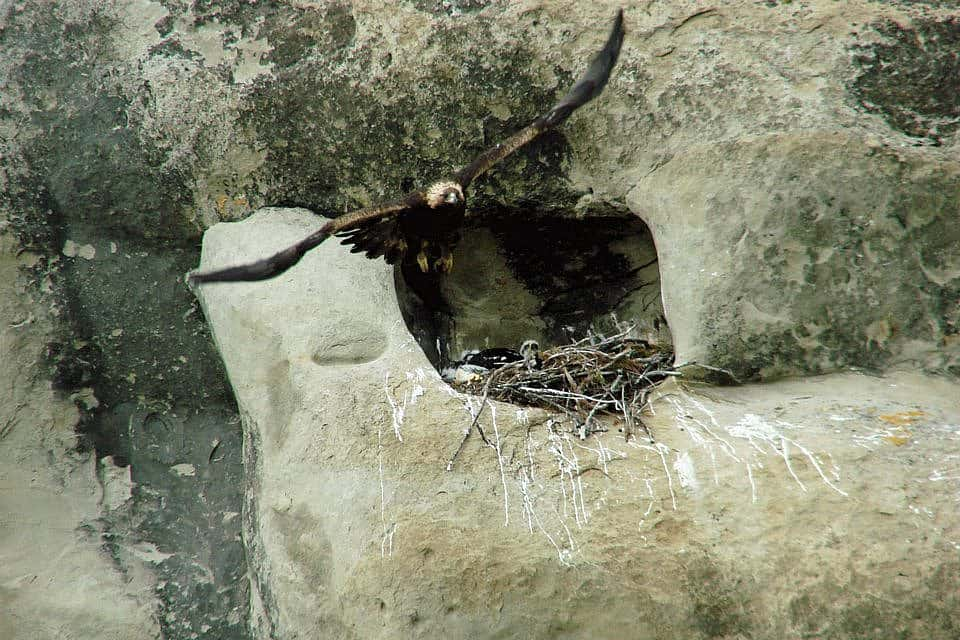
My second reason for this emotion came from my happiness to have this wonderful bird. I can’t imagine what it will be like to spend time with such a majestic eagle, to stand close to her, to be part of her life, and to share my knowledge with visitors. Kateri could no longer survive in the wild, there was just too much damage to the muscles in her right wing. The other alternative would have been to euthanize her, which would have really been a tragedy. Kateri will live a useful life in education as an ambassador for her species. She will be well taken care of, food will be served to her daily, she will be attended to by a veterinarian when needed, and will live a longer, easier life. She will be loved not only by those of us who will work with her, but also by the many visitors from all over the world who will have the opportunity to see her, and learn about golden eagles. I am so happy that we were the lucky program that was granted the privilege to receive this wonderful eagle.
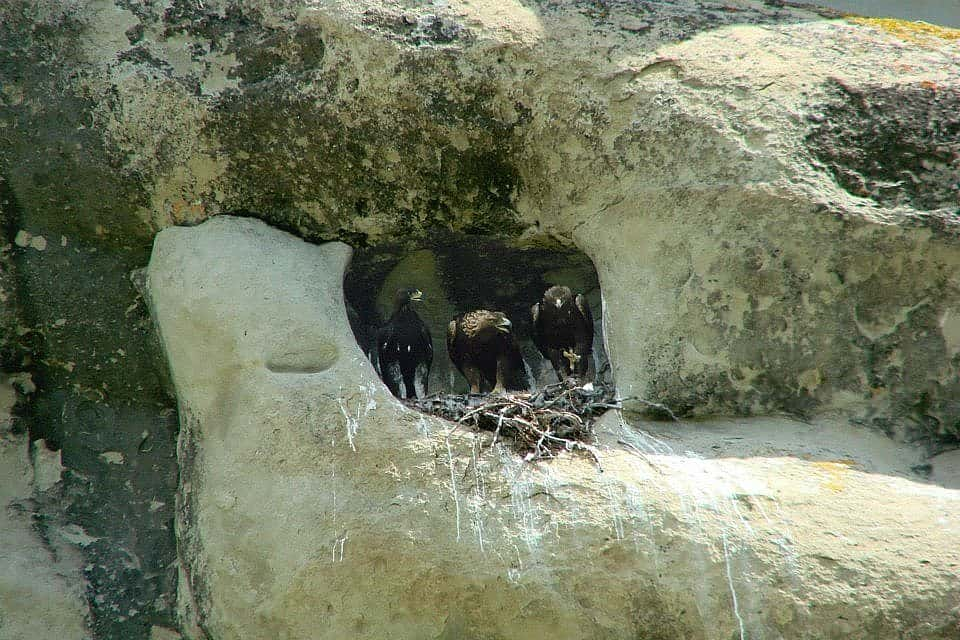
Question from visitors:
In the past, when I had mentioned that we were looking for a golden eagle, some people asked why would we want a golden eagle instead of a bald eagle.
A golden eagle fits our museum better than a bald in a couple of ways. As I had mentioned earlier, Dr. Preston, the Draper Curator, is conducting a research project studying a number of factors relating to nest success in the Bighorn Basin, such as land use, landscapes, human activity, climate, available prey, and how these may relate to the success or failure of a nest. We hope that in the future our research will help to guide land use management and increase public awareness of golden eagles in our area. Linking to Dr. Preston’s ongoing research project, a golden eagle is a perfect fit for our museum. Golden eagles are also a true representative of the west. While bald eagle populations are common from coast to coast, golden eagles are more commonly found in the west. Although there are a few scattered populations of goldens in the east, seeing a golden in the eastern part of the U.S. is a much rarer experience than seeing a bald eagle. In fact, people who claim to have seen golden eagles in the east, may actually have mistaken an immature bald eagle for a golden eagle. Because of this, more people recognize a bald eagle, especially since it is our national bird, but many have never seen a golden eagle. Here at the Buffalo Bill Center of the West visitors will have the opportunity to see a golden eagle up close.
If you are on Facebook, Kateri and our other birds appear regularly on our Draper Museum page.
If you are interested in learning more about Dr. Preston’s eagle study, visit his blog, “Field Notes at the Edge of the Wild.”
Written By
Melissa Hill
While earning her Bachelor's Degree in Wildlife Management at the University of Wyoming, Melissa began volunteering at Laramie Raptor Refuge and was instantly hooked on birds of prey. Since those early days, she has worked with nearly 70 different raptors at four different raptor education groups in three states. She is a former member of the Education Committee for the International Association of Avian Trainers and Educators (IAATE) and a National Association for Interpretation's Certified Interpretive Guide. When she's not "playing with the birds" she enjoys spending time quilting, crocheting, and exploring the Greater Yellowstone Ecosystem with her non-bird family.
